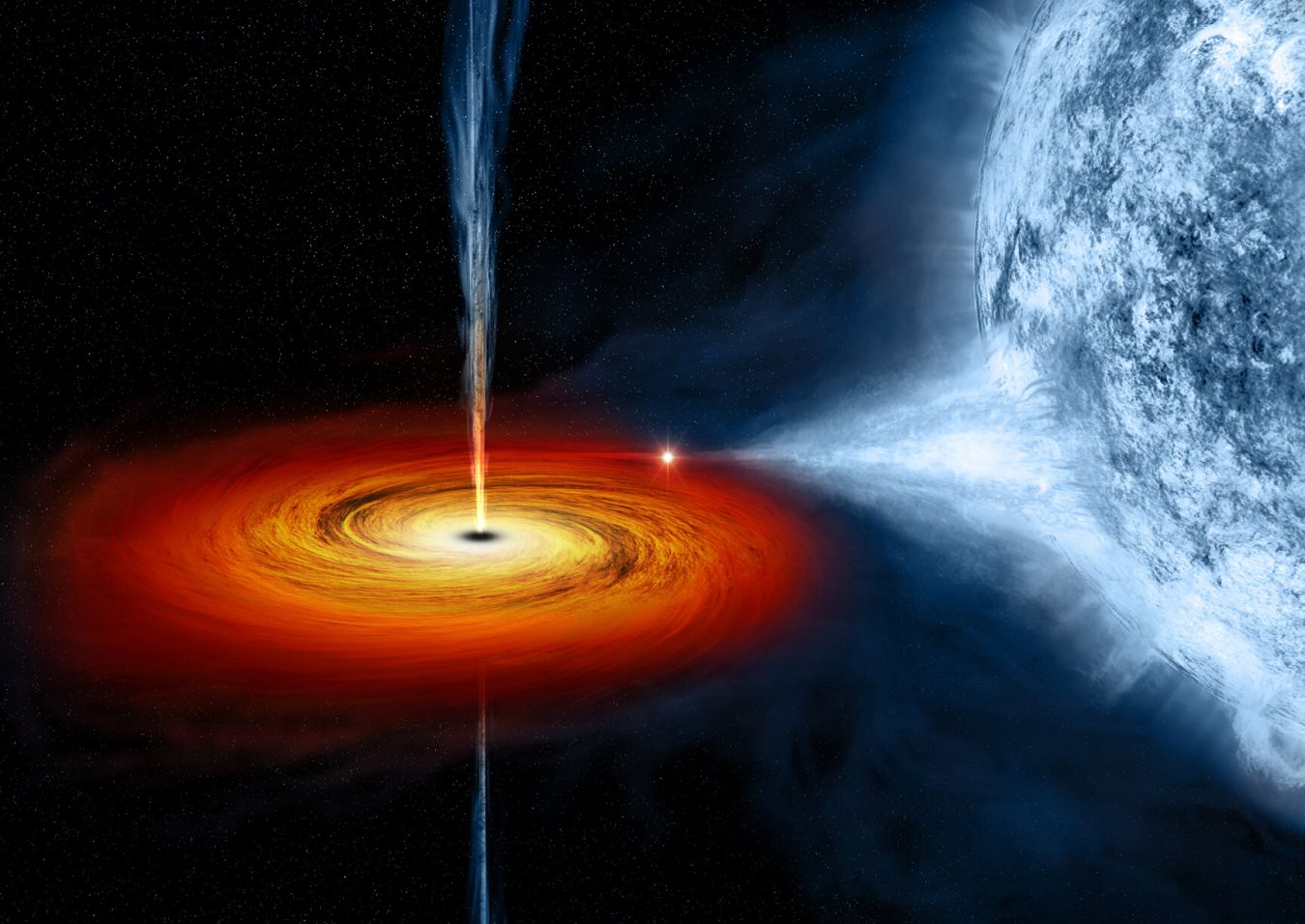DDO Black Hole Bigger Than Expected

Not a DDO construction update.
Cygnus X-1, the first X-ray source accepted to be a black hole, is bigger than expected. Possibly the biggest astronomical claim to fame for the giant telescope of the David Dunlap Observatory is its role in the first observations confirming Cygnus X-1 as a black hole.
We haven’t checked lately to see if that big hole they dug around the foundation of the David Dunlap Observatory administration building (our home) has been filled in yet. But that’s not what this is about.
It’s important to understand that it’s not as simple as an astronomer peeking through telescope and screaming “Hey! Look! A black hole!”
According to Wikipedia, a series of mathematicians and astronomers used Einstein’s theory of general relativity’s field equations to predict the existence of ultra-dense collapsed stars – or singularities – that we now call black holes. They would be difficult to detect, because the gravity is so intense that not even light could escape.
In 1964, rockets equipped with geiger counters identified a source of X-rays as one of the strongest X-ray sources seen from earth. That source was ultimately called Cygnus X-1
In 1970, the Uhuru satellite showed fluctuations of the X-ray intensity from that same source happening several times a second.
In 1971, astronomers detected radio emissions that didn’t make sense from the same source. They were looking at a star as the source of the X-ray emissions. But the star they were looking at could not generate the amount of X-rays they were seeing. The star must have a companion that could cause the necessary heating to generate those X-rays. An invisible companion.
In 1971, independent observations at the David Dunlap Observatory and the Royal Greenwich Observatory announced the discovery of a “massive hidden companion” to the star – and this is widely accepted as the first confirmation of the existence of a black hole.
Astronomers could measure the effects of a black hole, but they could not see one – until 2019, when an international network of telescopes co-operated to capture the first image of a black hole and its shadow. It wasn’t a direct observation. It was an accumulation of a massive amount of data from all these radio telescopes. How much data? It took a half a ton of hard drives. So much data that it was faster to fly the hard drives to MIT than to transfer the data over the Internet.
Scientists have continued to study Cygnus X-1, and the latest studies announced in 2021 indicate that it’s farther away and bigger than expected. According to this article, they used a large array of radio telescope dishes scattered across the USA to make the observations.
Cygnus X-1 is now the biggest black hole observed through optical methods, and it’s bigger than the biggest black hole they thought a star in our Milky Way could produce. So it’s back to the old math blackboard to explain it.

The fun never stops.
Image credit: NASA/ Chandra X-Ray ObservatoryC/M. Weiss https://chandra.harvard.edu/photo/2011/cygx1/cygx1_ill.jpg
- A.I. North and Python (2)
- Announcements (60)
- Events (88)
- Post-Event Report (25)
- Radio (9)
- Robotycs (5)
- Uncategorized (11)
- Upcoming Event (9)
- Update (32)
Latest Articles

YLab
123 Hillsview Dr, Richmond Hill, ON L4C 1T3
